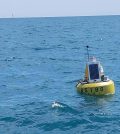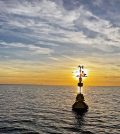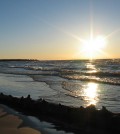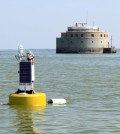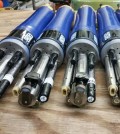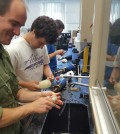Posts for tag "LimnoTech"
Lake Michigan’s Smarter, Streamlined Buoys
New, smarter buoys were deployed on Lake Michigan this summer, so EM spoke to an engineer who helped design them and a scientist using their data.
- Posted November 5, 2018
Texting Buoys Helping to Create a Data Democracy
The Great Lakes Observing System’s texting buoys are making all kinds of data available via text to anyone who wants it, democratizing data.
- Posted October 23, 2018
Sonar Assessments Of Saginaw Bay Reef Sites Aiding Restoration
Michigan DNR researchers lead an effort to assess four Saginaw Bay reef sites ahead of possible restoration work to support fish spawning habitat.
- Posted December 23, 2015
ICYMI: HABs Webinar Links
More than 300 viewers from 37 states, six countries, and 40 from the U.S. Environmental Protection Agency took part in a Dec. 16 webinar on real-time sensors for harmful algal blooms. But don’t fret if you missed...
- Posted December 21, 2015
Webinar: Use Of Real-Time HABs Sensors For Drinking Water Treatment
For more on the use of real-time sensors in water treatment plants to monitor changes in source water quality, please consider attending this Dec. 16 webinar.
- Posted December 2, 2015
Fondriest Crew Helps With Sonde Training At Lake Erie Center
Some of the Fondriest crew recently visited the University of Toledo’s Lake Erie Center to help assist with calibration training on YSI EXO2 Multi-Parameter Water Quality Sondes. Members from our team were joined by other experts from...
- Posted August 18, 2015
Lake Erie algal bloom monitoring network shaping up after Toledo water crisis
After the Toledo water crisis, treatment plants and researchers around Lake Erie are joining forces to create a harmful algal bloom monitoring network.
- Posted March 23, 2015
Toledo water crisis hastens Lake Erie water quality buoy near water intake
The Toledo water crisis that cut off water to 500,000 people also fast-tracked a new water quality data buoy near the city's water intake in Lake Erie.
- Posted August 12, 2014
LimnoTech’s Buffalo River Project
By Cathy Whiting The Buffalo River watershed encompasses approximately 445 square miles and drains portions of Buffalo and Wyoming counties in Western New York, including three major subwatersheds: Cayuga, Buffalo, and Cazenovia Creeks.
- Posted April 9, 2012


